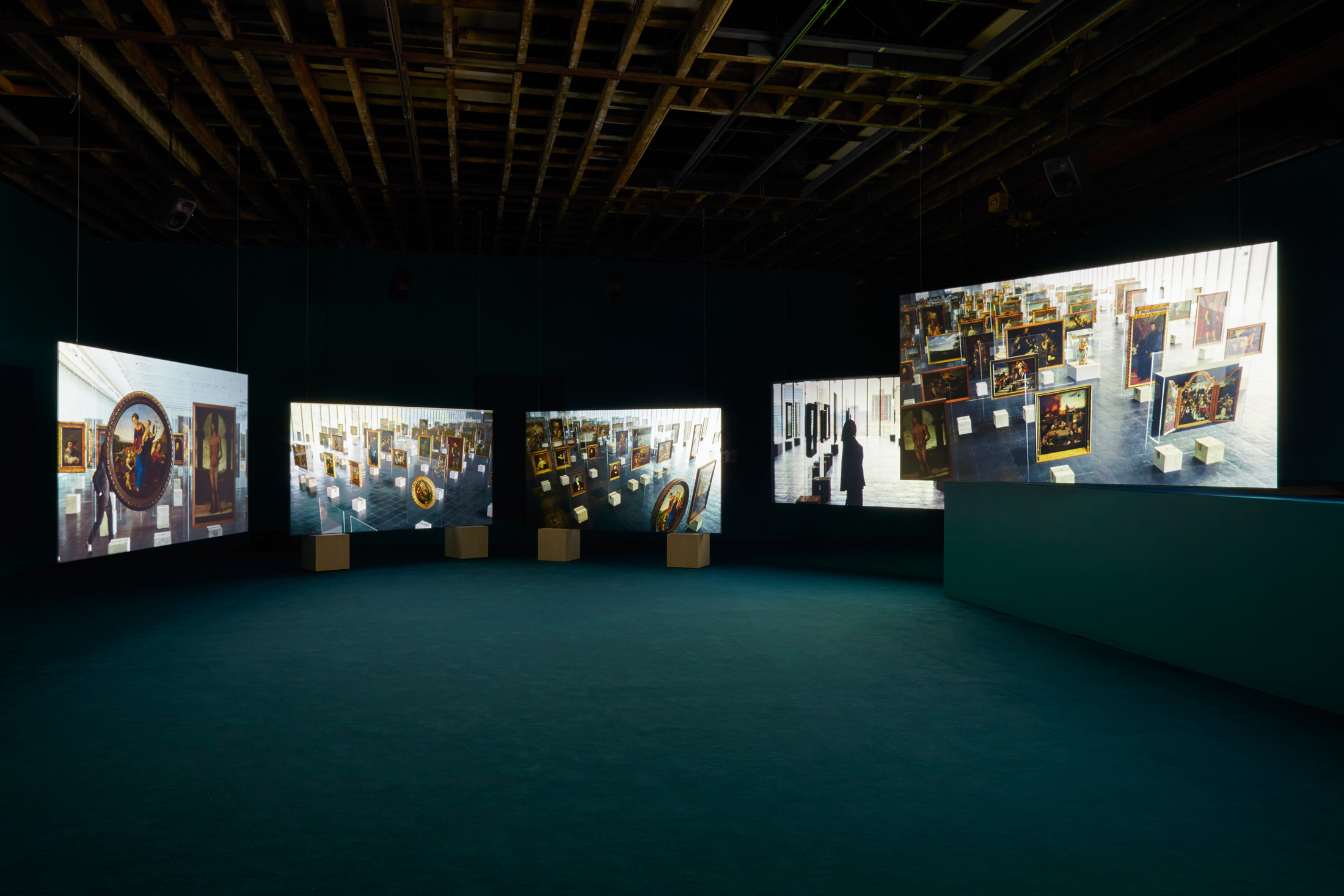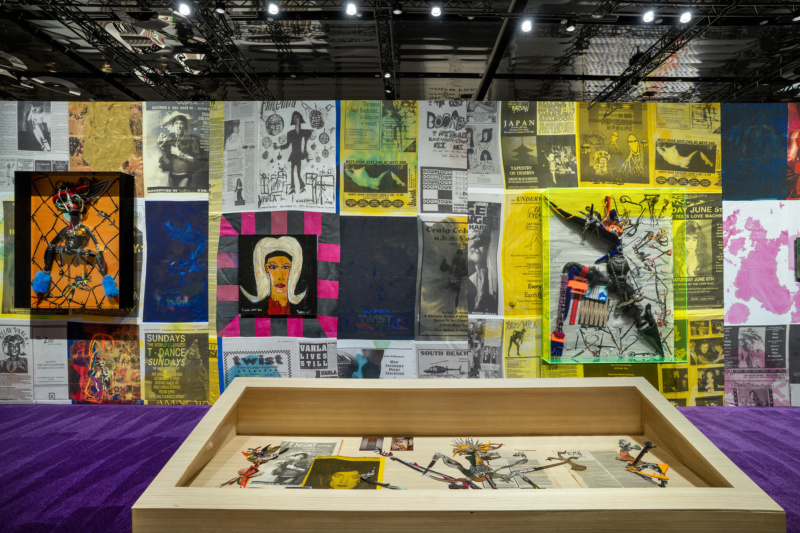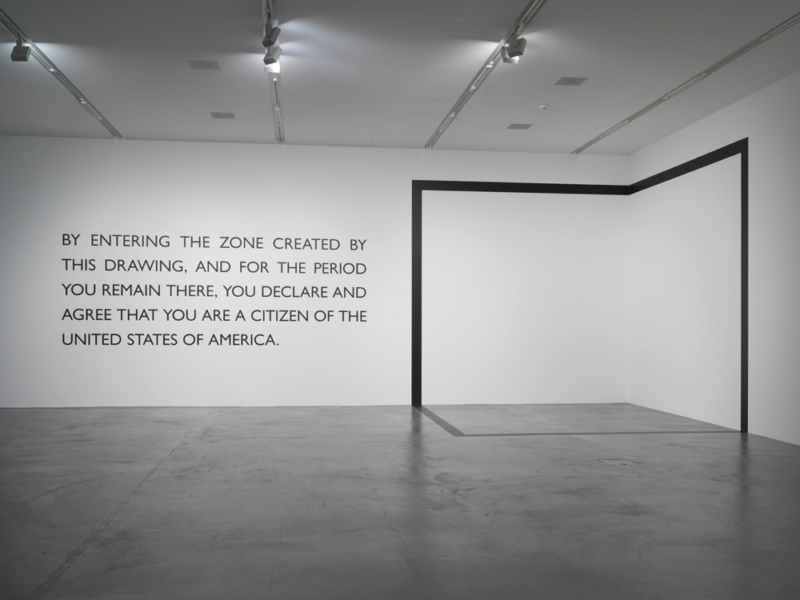
In its 18th year, Art Basel Miami Beach has come of age with a major expansion: the introduction of Meridians, a new section of the fair dedicated to presenting artworks too ambitious in scale for a traditional fair booth. Among the strongest of these projects was Isaac Julien’s Lina Bo Bardi – A Marvellous Entanglement (2019), a sprawling video installation that acts as a meditation on the life and career of the titular Italian-Brazilian architect. Shot within seven buildings designed by Bo Bardi, the work features actors playing the architect in her younger and elder years, juxtaposed with performers interacting with the spaces she created. Other highlights include General Idea’s Test Pattern: T.V. Dinner Plates from the Miss General Idea Pavillion (1988), a wry, expansive wall-work featuring three large banks of surveillance monitors all depicting test patterns composed out of 144 porcelain sushi plates, along with Pepe Mar’s Varla TV (2019), an ambitious installation that functions as a monument and public archive to Craig Coleman, the pioneering drag persona from the 1980s and early 1990s who worked under the name Varla.

Painting has long been the art fair’s medium of choice, largely because it’s more saleable, and this year two outstanding solo booths showcased the best that the medium has to offer. Pippy Houlsworth featured three early works from Faith Ringgold’s 1972 Slave Rape series; the portraits depict the artist pregnant, nude and wielding an axe alongside her two daughters. Made with quilts crafted by Ringgold’s mother, these paintings convey historical narratives about slavery and ancestry with a deeply feminist lens. Didier Williams, a Haitian-born, Philadelphia-based artist who came of age in Miami, presents a stunning suite of new works at James Fuentes. Referencing the histories and mythologies of his birth country, these paintings depict mysterious figures that cast a gaze back onto the viewer through the artist’s signature eye motif.
Textile also asserted itself as a medium of the moment this year. At P.P.O.W., Erin Riley uses her loom to recreate erotic selfies; these woven works speak to contemporary portraiture and a reclaiming of sexual agency. At Anat Egni, Jordan Nassar works collaboratively with Palestinian women in the West Bank, using traditional cross-stitch techniques from the region. The technically stunning works—which combine idyllic visions of the Palestine he grew up learning about with geometric patterns stitched by his collaborators—speak to larger issues about homeland and ancestry, as well as how artists of the diaspora can engage more deeply with the practices and practitioners of their home countries.

In recent years, galleries have increasingly introduced politically-minded work into the fair, and this year was no exception. On the outside wall of Paula Cooper’s booth, Carey Young’s Declared Void II (2005) presented a simple but forceful gesture: a black vinyl strip delineating the shape of a cube, alongside the phrase: “By standing in the zone created by this drawing, and for the period you remain there, you declare and agree that you are a citizen of the United States of America.” The artist, who often references the realms of law and politics in her practice, raises questions about citizenship, nationality and identity in this work. Ron Terada’s You Have Left the American Sector (2011), works in similar conceptual territory. The work consists of a large, highway-style sign bearing the piece’s title both in English and Spanish. Referencing signage at the famous East and West Berlin crossing point, Checkpoint Charlie, the artist offers a deadpan commentary on borders and migration.
But in what is possibly the best contribution to the fair, DC Moore presented Targets, an immersive dome painting by Joyce Kozloff. Once entering the walk-in globe, the installation surrounds the viewer with maps of places bombed by the United States from 1945 to the year 2000. In a fair with hundreds of galleries with thousands of works on view, this piece—which makes real the horrors that are so often abstract to Americans—warrants serious attention.










 in your life?
in your life?

